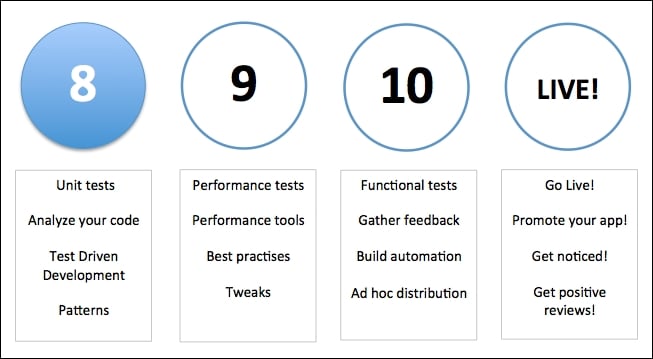There are some common pitfalls to avoid and some patterns that you may want to apply in order to improve the quality of your app. You have seen some of them in the previous chapters already. Also, there are some interesting tools that can be used to test and analyze your code.
In the following road map, you will notice that there are different stages that you need to complete before you can go live with your app:

The structure of your code, robustness, maintainability, and how well it complies with the functional requirements are key elements.
Functional quality is measured through software testing, for which we need to distribute our app to our beta testers. We will discuss this in Chapter 10, Beta Testing Your Apps.
Structural quality is evaluated by running unit tests and code inspections manually (peer review) or using tools such as Android Lint, which you will learn more about in the final recipe within this chapter. Now the question is how well does the architecture of the...



